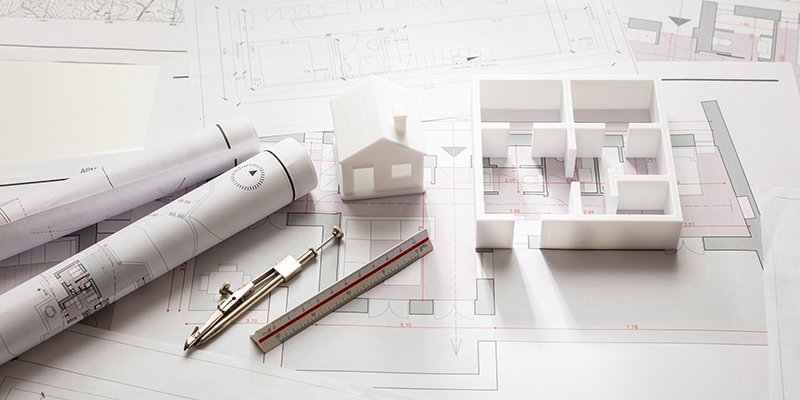What Does An HOA Architectural Control Committee Do?

Many homeowners associations have an Architectural Control Committee that reviews architectural modifications within the community. As a homeowner in a planned community, it is important that you know what such a committee does and how it can affect you.
Browse By Category
Sign up for Our Newsletter
Many homeowners associations have an Architectural Control Committee that reviews architectural modifications within the community. As a homeowner in a planned community, it is important that you know what such a committee does and how it can affect you.
What Is an Architectural Control Committee?
As its name indicates, an Architectural Control Committee is a committee that oversees architectural requests and compliance. You will usually find this type of committee within planned developments, such as homeowners and condominium associations.
Not all associations have an ARC committee, though. In smaller associations, the HOA board typically fulfills the responsibilities normally carried out by the Architectural Control Committee. When there are fewer properties and property owners within the community, there are fewer requests or violations to manage.
In contrast, HOA boards in larger associations usually have more tasks to get through on a regular basis. Thus, these boards delegate some of the work to committees, one of which is the ARC.
There are many names an Architectural Control Committee can go by. This includes Architectural Review Committee (ARC), Architectural Committee, Design Review Committee, Environmental Control Committee, and even Art Jury.
What Does an Architectural Committee Do?
Homeowners associations place significance on uniformity, particularly when it comes to the exterior appearance of properties in the community. Associations have certain deed restrictions dictating what you can and can’t do with your property, including how it should look. This is why many houses in planned communities look similar.
Living in an HOA community does not give you much room to express yourself creatively through exterior design. But, this type of uniformity does benefit homeowners in the end. The consistent look of properties contributes to the general curb appeal of the neighborhood. This, in turn, improves property values.
If you wish to make architectural changes, you will usually need to go through the ACC. One of the most important HOA architectural review committee responsibilities is managing the application and approval process for such modifications.
Other HOA architectural committee responsibilities include but are not limited to:
- Checking the community for violations of the architectural guidelines HOA has imposed;
- Enforcing the standards written in the governing documents in a consistent and fair manner;
- Evaluating the existing guidelines and proposing changes to the board;
- Making recommendations to the HOA board; and,
- Educating homeowners on the architectural guidelines and the application/approval process.
Architecture Committee Scope of Authority
The scope of authority can vary from association to association, with the type of common interest development also playing a role. For planned unit developments, ACCs usually handle the following:
- Placement, design, and height specifications for structures
- Requirements for lot setback
- Landscaping modifications or improvements
- Exterior paint colors and finishes
- Materials used for roofing
- Fences
- Satellite dishes
- Solar panels
- Electric vehicle charging stations
On the other hand, ACCs in condominiums usually handle the following:
- Modifications to interior flooring such as hardwood installations
- Changes to plumbing or electrical design
- Balcony items, including flooring, furniture, and plants
- Window covers, tints, and design
- Placement of satellite dishes
- Electric vehicle charging stations
Architectural Control Committee Guidelines
 What are architectural guidelines? Architectural guidelines are a set of standards for architectural or exterior property modifications or improvements that homeowners must follow. The ARC bases its reviews on these written guidelines, which you can usually find within your association’s governing documents.
What are architectural guidelines? Architectural guidelines are a set of standards for architectural or exterior property modifications or improvements that homeowners must follow. The ARC bases its reviews on these written guidelines, which you can usually find within your association’s governing documents.
But, no two associations have the same set of guidelines. For instance, one HOA might only allow homeowners to paint their houses in certain shades of brown, while another might allow for more variety. It is essential to check your own architectural guidelines to learn what you can and can’t do with your property.
Some federal and state laws, though, prohibit or limit HOAs from certain architectural restrictions. For instance, according to the FCC’s OTARD Rule, associations can’t prohibit homeowners from installing satellite dishes or antennas. But, they can regulate things like placement and size.
Another good example is solar panels. Because many solar panels don’t coincide with HOA architectural committee guidelines, some have taken steps to ban them totally. But, a number of states have already enacted solar access laws protecting homeowners’ rights to generate solar energy.
Board and ARC members must always keep up-to-date on the different federal and state laws that might affect the HOA. In doing so, they can safeguard the association from potential liability. Similarly, as a homeowner, you should familiarize yourself with these laws. This way, you can protect your rights.
The HOA Architectural Committee Application Process
Before making any architectural changes, you must first file an ARC request. What is an ARC request? For most associations, an ARC request is a standard protocol that homeowners must follow when they wish to make modifications to their property. Although the application and approval process can differ depending on the HOA, it usually involves three main steps:
1. Fill Out an Application Form
To initiate the process, you will need to fill out an HOA architectural review form. This form will ask you for all the pertinent details of your request, including but not limited to:
- Alteration or addition type
- Purpose of the alteration or addition
- Planned materials you will use
- Color of paint or finish you will use
- Details of the project
- Sample designs or plans of the work
- Contractor details
- Work schedule and a timeline for completion
- Necessary permits
Download Your HOA Architectural Review Application Form Here
2. Committee Review
An Architectural Control Committee holds regular meetings to discuss and review applications. The committee must go through each application in good faith and make decisions based on sound judgment and reason. Reviews must be based on the architectural guidelines found within the association’s governing documents.
3. Board Decision
Following review, the ACC will then make a recommendation to the board. The final approval or denial will come from board members, who must also make their decisions reasonably and in good faith. The board should make its approval or denial of the request in writing. Typically, the HOA architectural approval form will include a section for this.
Many governing documents will require the ACC and HOA board to give a response to the requesting homeowner within a period of time. For most, it is 30 days. If the board chooses to deny the request, the board should include in writing a reason for the denial. The board should also give instructions on how the homeowner can request reconsideration.
Following the approval or denial of a request, the board or committee must store a copy of the form and decision both digitally and physically. This serves as a reference in case of future disputes or litigation.
Always Seek Approval First
You may feel tempted to begin the construction or installation process before the ACC gives you the go signal. Some contractors even find ways to convince homeowners that ACC decisions are no big deal and that they have dealt with similar cases in the past. But, don’t let your impatience get the better of you.
Starting the construction or installation process without approval from the ACC and HOA board will only waste your time and money. The ACC may force you to undo what has already been done and start over according to the guidelines. It may even lead to a delay in the project.
Violating HOA Architectural Guidelines
If the ARC finds you in violation of the architectural guidelines, it will usually send you a warning letter. When this leads to a dispute, many governing documents require you to go through alternative dispute resolution.
Depending on the association, the ARC may also impose a monetary fine as a result of the violation. Prior to issuing a fine, though, the association will first schedule a hearing where you can defend your actions. This is part of your right to due process. The HOA must provide you with notice of the hearing, including the date and location.
Can an HOA Rescind Approval?
What if the HOA board already gave you their approval but then suddenly chose to rescind it? As a homeowner, you must understand the concept of reliance. Although it is possible for the board to undo a decision, the general exception is that they can’t do so if the homeowner has already acted in reliance according to the previous decision.
It is also worth knowing who has the authority to approve architectural requests. If the ACC only serves in an advisory capacity, such as giving recommendations to the board, then their approval — even in writing — does not count.
Architectural Committee HOA: The Final Word
When it comes down to it, establishing an Architectural Control Committee has many benefits. For one thing, it makes the HOA board’s life easier. Beyond that, though, the ACC helps keep the community aesthetically pleasing, thereby maintaining both curb appeal and property values. As such, you must do your best to comply with the standards enforced by this committee.
Are you looking for an HOA management company near you? Find the best one today using our comprehensive online directory.
RELATED ARTICLES:
- HOA Electric Car Charging Policy: Why Have One?
- Can Homeowners Get A Traffic Ticket In An HOA?
- HOA Landscaping: Benefits, Budget, Cost, Requirements, and Restrictions
Trending Now
Related Article
Sign up for Our Monthly Newsletter
Sign up below for monthly updates on all HOA Resource
















